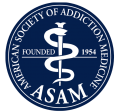Attention deficit frequently contributes to a series of random poor decisions which can and often do accelerate the evolution and escalation of addiction, repetitive self-defeating and/or self-destructive behavior.
If attention deficit did not predate the use of a gateway drug and drug of choice, it is certainly likely to floridly appear during detoxification and rehabilitation.
In fact, attention deficit is one of the biggest, if not the biggest, obstacle to getting through detoxification and the first 30 days of rehabilitation. It is not uncommon for attention deficit to hamper recovery for up to a year.
In fact, drug thoughts themselves, and drug cravings themselves, are fruit of the attention deficit “tree.”
This is why detoxification and 30 day rehabilitation alone is the same as sitting down to dinner and just eating appetizers. Detox doctors, regardless of skill-set and experience, are constitutionally incapable of determining if the attention deficit “chicken” came before the attention deficit “egg” or vice versa unless previously diagnosed as such at a pre-gateway drug stage of development.
The same holds true for substance abuse nurses, counselors, and other residential and IOP treatment personnel, and self-help sponsors during the first month or two of rehab.
It is often during IOP aftercare that attention deficit can be judged as having been present before ever having picked up the first gateway drug or drug of choice.
Regardless of whether attention deficit was diagnosed before picking up that first drink or drug or after, the ADHD diagnosis is likely to be given to boys more frequently than girls, women and men.
Why is Attention Deficit Missed in Girls & Women?
It’s simple. Certain addictions researchers who have been attentively studying and publishing about attention deficit for over 35 years, are convinced that the clinicians who compiled attention deficit diagnostic criteria, had attention deficit themselves.
Again, no joke, the members on the numerous committees regarding attention deficit diagnostic criteria for each Diagnostic and Statistical Manual of Mental Disorders (DSM) evidently had attention deficit, except for the members of the attention deficit committee for the DSM-3 (1980). Evidently, the DSM-3 attention deficit committee was fairly well focused during their meetings.
The members of the attention deficit committees for the DSM-2, DSM-3R, DSM-4 and DSM-5 had attention deficit.
Let’s see why.
The DSM-2 (1975-1979) labeled “attention deficit” as Minimal Brain Dysfunction. Okay, that’s a start.
Then the substantially astute, admirable and focused attention deficit committee associated with the DSM-3 did their research and homework and got it almost 100% correct.
Here is what the fairly admirable scientists of the DSM-3 (1980-1986) got right:
- Attention Deficit Disorder (ADD) comes in 2 fundamental varieties
- ADD with hyperactivity
- ADD without hyperactivity
- The wise DSM-3 clinical researchers probably noticed that:
- most boys with ADD were hyperactive,
- most men with ADD were not visibly hyperactive, but rather anxious and uncertain, and able to sit still,
- some boys and men with ADD were neither hyperactive nor anxious, and could sit still but were unable to focus and concentrate
- most girls with ADD were not visibly hyperactive,
- and most women with ADD were not visibly hyperactive, but rather gracefully anxious and uncertain, and able to gracefully sit still.
- ADD with or without hyperactivity potentially diagnosed and treated more girls, boys, women and men than the current inaccurate and sexually biased diagnostic entity, Attention Deficit Hyperactivity Disorder or ADHD,
- which could have potentially averted countless lives from being chronically riddled and relentlessly hammered by low self-esteem, misunderstandings, arguments, loud and/or violent fights, rejection, abandonment, underachievement, divorce, unemployment, substance dependence and other assorted psychosocial day-mares and nightmares.
- The DSM-3 finally got it pretty well right and many of us where thrilled.
- Then countless girls, ladies, small percentages of boys, large percentages of men and a few addiction psychiatry clinicians got very unlucky with the release of the DSM-3 R attention deficit classification abomination.
The DSM-3 R (revised) (1987-1993):
- Made some very good changes from the DSM-3 and included changes made by one of our associates
- The DSM-3 R also made some nasty blunders
- Probably the biggest blunder of the DSM-3 R was the changing of ADD with or without hyperactivity
- to Attention Deficit Hyperactivity Disorder or ADHD
- This substantially silly ADHD classification mandated that if you were not hyperactive, you couldn’t possibly be suffering from attention deficit
- OMG
- Seriously?
- What were they smoking?
- Did they share?
- The new ADHD diagnostic criteria stated by proxy that:
- Girls without hyperactivity could not possibly have ADD
- Boys without hyperactivity could not possibly have ADD
- Women without hyperactivity could not possibly have ADD
- Men without hyperactivity could not possibly have ADD
- Girls without hyperactivity focus and concentrate just fine
- Boys without hyperactivity focus and concentrate just fine
- Women without hyperactivity focus and concentrate just fine
- Men without hyperactivity focus and concentrate just fine
Did the DSM-3 R ADHD committee meet at a baccarat table while sipping drinks and smoking cigarettes? Didn’t they realize that unmanaged attention deficit is the child of substance use disorders?
Don’t you wonder what the incidence of drug addiction was between the years the DSM-3 expired (1986)? and the year the DSM-3 R expired (1993)? Was 1987 to 1993 not the height of the cocaine epidemic on the Right coast and amphetamines on the Left?
Don’t you wonder if the incidence of alcohol and drug addictions (including nicotine—one of the most effective ADD “medicines”—dependence) surged between 1987 and 1993?
The DSM-4 (1994-2012):
- No changes regarding ADHD
- It was ADHD in the DSM-3 R
- It was ADHD in the DSM-4
- Evidently, girls without hyperactivity could still not possibly have ADD
- Boys without hyperactivity could still not possibly have ADD
- Women without hyperactivity could still not possibly have ADD
- Men without hyperactivity could still not possibly have ADD
- Girls without hyperactivity still focused and concentrated just fine
- Boys without hyperactivity still focused and concentrated just fine
- Women without hyperactivity still focused and concentrated just fine
- Men without hyperactivity still focused and concentrated just fine
Don’t you wonder if the incidence of alcohol and drug addictions continued to increase between 1987 and 1993? What were the DSM-4 ADHD committee members thinking?
Weren’t 2010-2012 the headwaters of the current opioid addiction tsunami? How many people died of opioid dependence in 2010, 2011 and 2012, and how many died in 2017 and 2018?
The DSM-5 (2013-2019):
- No changes regarding ADHD
- It was ADHD in the DSM-4
- It is ADHD in the DSM-5
- Evidently, girls without hyperactivity can still not possibly have ADD
- Boys without hyperactivity can still not possibly have ADD
- Women without hyperactivity can still not possibly have ADD
- Men without hyperactivity can still not possibly have ADD
- Girls without hyperactivity must still be focused and concentrating just fine
- Boys without hyperactivity still must be focused and concentrating just fine
- Women without hyperactivity must still be focused and concentrating just fine
- Men without hyperactivity must still be focused and concentrating just fine
Don’t you wonder if the incidence of alcohol and drug addictions, including opioid, fentanyl and carfentanil, have continued to increase between 2013 and hoy? What were the DSM-5 ADHD committee members thinking? Aren’t the 2013 trough today’s opioid epidemic casualty numbers at the top of their game?
If the DSM-6 ADHD committee ever convenes without recruiting an epidemiologists well-seasoned in addiction neuropsychiatry, perhaps there is no hope for them to get attention deficit and other “diagnostic entities” correct.
If they eventually recruit specialized epidemiologists (who also are aware of similar errors in medical nosology) for the DSM-6 ADHD committee, they might be educated to the distinct and feasible possibility that neither ADD not ADHD actually exist.
Instead, they may learn the attention deficit symptom is associated with countless other factors including:
a. Insomnia
b. Depression
c. Anger
d. Rage
e. Anxiety
f. Fear
g. Worry
h. Uncertainty
i. Reading unpleasant material
j. Over sleeping
k. Dieting
l. Exhaustion
m. Obsessive thinking
n. Prescription medicines
o. Drugs
p. Over-the-counter medicines and supplements
q. Oxidized foods
r. Behavioral addictions
s. Exhaustion
t. Puberty
u. Transitions in school, college and the work place
v. Divorce
w. Driving in an unfamiliar city
x. Being in an unfamiliar country
y. Jetlag
z. and many other factors that early cognitive and behavioral therapy can help triage and address.
The problem regarding ADHD misdiagnosis in people, especially girls and women, is now clear.
The solution is even clearer.
Reach Out
If you or someone you know is struggling with substance abuse problem, please reach out to our addiction specialists for guidance and support, at (877)-RECOVERY or (877)-732-6837. Our addiction specialists make themselves available to take your call 24 hours a day, 7 days a week. Because We Care.
























